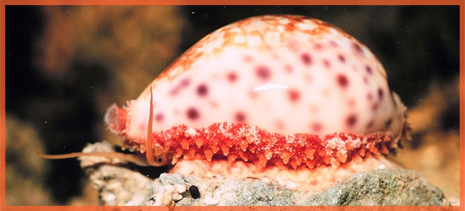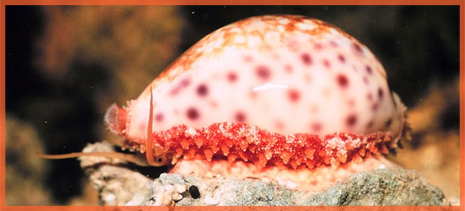
If you haven’t yet heard, the Nature Conservancy recently released a report that documented a staggering decline in oyster reefs. According to the report, “Globally, 85% of oyster reefs have been lost, making oyster reefs one of the most severely impacted marine ecosystem on the planet (Shellfish Reefs at Risk, Nature Conservancy, 2009).”
But as oysters grab their 15 minutes of media fame, the decline of other mollusks has gone and continues to go largely unnoticed. Knowing that mollusks have been deemed the group most affected by extinction (IUCN Red List 2007) and observing a potential disconnect between the number of researchers studying mollusks and the number of species, which is estimated to be 100,000-200,000, Claire Régnier wanted an answer to her question of ‘what proportion of species that are known to be extinct by specialists is captured by the IUCN Red List?’
Of all of the invertebrates, mollusks are perhaps the most varied in terms of body form and include gastropods, bivalves, cephalopods, chitons, and monoplacophorans and are found in both terrestrial and aquatic habitats. Yet, the diversity to publicity and researchers is inversely proportional and is leading to a lag in recorded extinctions as is evident with the findings. Preliminary data from the IUCN provided a known global extinction number of 850 species of which 278 were correctly listed as extinct. But, further investigation revealed that the actual number of extinct mollusks was 566 species. The listed number and actual number increased by a whopping 49% after consultation with experts and obtaining published references for the status of each species.
- 278 species/subspecies – Already listed on the IUCN Red List
- 278 species/subspecies – Extinctions recorded neither in literature nor on the IUCN Red List
- 14 species/subspecies – Recorded as extinct in the literature but not on the IUCN Red List
Indeed, there is a mismatch between the number of scientists working on birds and mammals and the very few taxonomists specializing in invertebrate taxa. If one adds to this the unbalanced repartition of human effort and funding in relation to the richest biodiversity locations, it becomes clear that these two phenomena are influencing this uneven number of documented extinctions.
Moreover, there is a huge taxonomic bias in the assessment of species’ conservation status. According to Baillie et al. (2004), the conservation status of almost 90% of mammal species and of all bird and amphibian species has been evaluated, whereas only 3% of mollusk species and 0.08% of insect species have been assessed. Indeed, invertebrates receive much less attention than vertebrates, and our knowledge of them is sparse.
With high profile members of the Mollusca phylum garnering recent attention for their incredible declines I hope that additional efforts and monies will become available to entice researchers to continue this enormous taxonomic task and ensure extinctions do not continue to go unnoticed.
Reference:
![]() RÉGNIER, C., FONTAINE, B., & BOUCHET, P. (2009). Not Knowing, Not Recording, Not Listing: Numerous Unnoticed Mollusk Extinctions Conservation Biology DOI: 10.1111/j.1523-1739.2009.01245.x
RÉGNIER, C., FONTAINE, B., & BOUCHET, P. (2009). Not Knowing, Not Recording, Not Listing: Numerous Unnoticed Mollusk Extinctions Conservation Biology DOI: 10.1111/j.1523-1739.2009.01245.x

